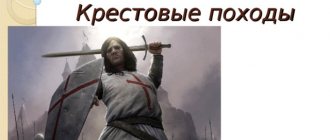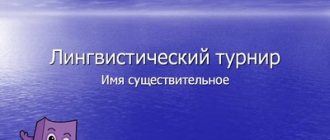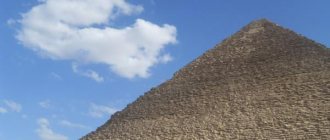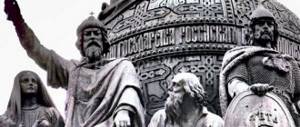Test paper on the history of the Reformation and Counter-Reformation in Europe for grade 7
Test work on the history of the Reformation and Counter-Reformation in Europe for 7th grade students with answers. The work includes 20 multi-level tasks.
1. M. Luther's speech, which marked the beginning of the Reformation in Europe, took place in
1) 1517 2) 1555 3) 1609 4) 1642
2. Which of the following was contained in M. Luther's 95 theses?
1) call for an uprising against the princes 2) refusal to appear at the imperial court 3) condemnation of indulgences 4) demand for the re-election of the Pope
3. Which of the named persons was not among the leaders of the European Reformation?
1) John Calvin 2) Ignatius of Loyola 3) Martin Luther 4) Ulrich Zwingli
4. The Peasant War unfolded in 1524-1525.
1) in England 2) in Northern Italy 3) in Southern France 4) in Germany
5. The followers of Protestantism in France were called
1) Puritans 2) Templars 3) Hussites 4) Huguenots
6. "The Pope of Geneva" was called
1) Thomas Münzer 2) Ignatius of Loyola 3) John Calvin 4) Johannes Gutenberg
7. The religious peace concluded in 1555 at Augsburg provided
1) restoration of the dominance of the Catholic religion in all German lands 2) refusal of the church in all German lands from subordination to the Pope 3) establishment of equality between Catholics and Protestants (tolerance) in the German lands 4) establishment in each land of the faith professed by its ruler
8. What event went down in history under the name “Bartholomew’s Night”?
1) massacre of Huguenots in Paris and other cities 2) reprisal of participants in the Jacquerie uprising 3) conversion of the Huguenot leader Henry of Navarre to Catholicism 4) execution of Puritan preachers in London
9. Which of the following contributed to the end of the religious wars in France at the end of the 16th century?
1) the conclusion of peace between the leaders of Catholics and Huguenots 2) the flexible religious policy of Henry IV 3) the capture of the Huguenot fortress of LaRochelle by royal troops 4) the ban on the Protestant religion and the expulsion of the Huguenots
10. Which two of these provisions were contained in the teachings of M. Luther?
1) on the subordination of secular rulers to church authorities 2) on worship in national languages 3) on justification by faith 4) on the property equality of believers
11. Which two of these events relate to the Counter-Reformation policies of the Catholic Church in the 16th century?
1) the beginning of the publication of the Index (list) of prohibited books 2) the establishment of the Holy Inquisition 3) the creation of the Jesuit Order 4) the organization of the crusades
12. Which two of these events relate to the religious wars in France in the 16th century?
1) the campaign of the Invincible Armada 2) the signing of the Peace of Augsburg 3) St. Bartholomew's Night 4) the publication of the Edict of Nantes by Henry IV
13. Which of the following was included in the Edict of Nantes issued by King Henry IV of France in 1598? Give two correct statements.
1) preservation of the role of the state religion for Catholicism 2) complete equality of rights for Catholics and Huguenots 3) freedom of religion for Huguenots 4) expulsion of the Huguenots from France
14. Which two of the terms listed in the table will you include in the line: Protestant, Lutheran, ___________, ___________?
1) intendant 2) Calvinist 3) cardinal 4) Huguenot
15. Arrange the named events in chronological order.
1) publication by Henry IV of the Edict of Nantes 2) publication by M. Luther of 95 theses 3) St. Bartholomew’s Night
16. Match the terms with their meaning. For each position in the first column, select the corresponding position from the second column.
Terms
A) tithe B) indulgence C) bull
Meaning
1) letter, letter from the Pope 2) church communion 3) document of absolution
17. Establish a correspondence between the names of historical figures and their activities. For each position in the first column, select the corresponding position from the second column.
Names
A) John Calvin B) Thomas Munzer C) Ignatius of the Loyola Wars
Activity
1) founder of the Jesuit Order 2) military leader during the religious wars 3) founder of one of the Protestant movements 4) one of the leaders of the Peasants' War in Germany
18. Read an excerpt from a historical document and answer the questions.
“...by the apostolic authority given to me and extended to you, I free you from all your sins destroyed, confessed and forgotten; also from all falls, crimes, misdemeanors and any serious offenses <...>, as well as from any excommunications <...> and other church sentences, condemnations and punishments imposed by judicial and human authorities.”
1) What was the name of this document?
2) Explain, using the text and knowledge of history, on whose behalf it was given.
19. Read an excerpt from a historical essay and answer the questions.
“At this time, a seller of indulgences, the Dominican monk Tetzel, appeared near Wittenberg, and ___________ nailed 95 theses (positions, evidence) to the doors of the Wittenberg palace church, in which he rejected the view on indulgences established by the Catholic Church and proved that without sincere repentance, no indulgences can give forgiveness of sins, especially since they cannot save the dead from the afterlife punishment who have already been subjected to God’s judgment... ___________ summoned all those who disagreed with this to a debate.”
1) Name the name of the person whose speech is being discussed that is missing in the text, and the year when the event described occurred. 2) Explain the significance of the sale of indulgences for the Catholic Church and why it was protested.
20. Read an excerpt from a document called the 12 Articles (written in Germany in the 16th century) and answer the questions.
“Firstly, our humble request and desire, our common will and opinion, is to henceforth have the right and power for the entire community to choose a priest for itself and to remove him when he behaves inappropriately. This elected priest must preach to us the holy Gospel, pure and clear, without any human addition, teaching or command, only the true faith...
Secondly, although the just tithe established in the Old Testament has become invalid with the New Testament, nevertheless, we agree to give a fair grain tithe, but only as it should be. After all, since it should be given to God and his people, then it is appropriate for a priest, since he proclaims the correct word of God. From now on, we wish that this tithe would be collected by our church elders, whom the community will appoint, and from what was collected would be given sufficient maintenance to the priest chosen by the entire community, to him and his close people, according to the verdict of the community. And what is left over is to be given to the poor, whoever happens to be in the village, according to the circumstances of the case and by the verdict of the community...
Thirdly, until now it has been the custom to consider us “our own” people, which is like pity, considering that Christ, by the shedding of his precious blood, freed and redeemed us all, both the shepherd and the highest, not excluding anyone. Therefore, it is in accordance with Scripture that we should be and want to be free...
We have no doubt that you, as true and genuine Christians, will readily release us from our personal fortress or prove to us according to the Gospel that we should be serfs... <...></…>
Fifthly, we are also burdened with the use of forests. For our masters have appropriated all the forests exclusively for themselves...
Sixthly, we suffer great burdens from duties that are growing and multiplying from day to day...”
1) The requirements of which population group are set out in the document?
2) The ideas of what significant movement of that time were reflected in the document? What provisions of the document indicate this?
ANSWERS - Test work on the history of the Reformation and Counter-Reformation in Europe for 7th grade students 1-1 2-3 3-2 4-4 5-4 6-3 7-4 8-1 9-2 10-23 11-13 12- 34 13-13 14-24 15-231 16-431 17-341 18. 1) Indulgence. 2) Indulgence (that is, remission of sins during a person’s lifetime) was given, or rather, sold, on behalf of the Pope. 19. 1) Martin Luther. 1517 2) The Church turned the sale of indulgences into a source of its income. The protest was caused by the fact that church leaders, without reason, arrogated to themselves the right to absolve any sins and used this for personal enrichment. 20. 1) The demands of the peasants are stated, as the issues that worried the peasants are mentioned (about dependence on masters, duties, etc.). 2) The document reflected the ideas of the Reformation. This is evidenced by statements about the Gospel as the most important and only source of faith, proposals on the election of priests and the distribution of tithes. This calls into question the policies of the church authorities and Rome.
PDF version Test work on General History Reformation and Counter-Reformation in Europe for grade 7 (103 Kb, pdf)
General history test on the topic “Reformation in Europe” for grade 7
Test New history 7th grade. Topic: “Reformation in Europe”
1 option
1. The movement for the reconstruction of the church was called:
a) reform b) reformation c) counter-reformation
d) revolution
2. The birthplace of the Reformation is considered to be
: a) England b) France c) Italy d) Germany
3 . What church was formed in Switzerland
: a) Lutheran b) Presbyterian c) Catholic
d) Orthodox
4. Supporters of the Reformation in Germany were called:
a) Presbyterians b) Lutherans c) Huguenots d) Catholics
5. A feature of the Reformation in England was :
a) a painless process b) religious wars c) The Reformation was carried out by the king
6. The church court created to fight heretics was called
:
a) indulgence b) Jesuit order c) Inquisition d) council
7. Among the named churches, Protestant ones include
:
a) Anglican b) Presbyterian c) Lutheran d) Catholic
8 Which of the following personalities defended Catholicism:
a) John Calvin b) Henry VIII c) Mary Tudor d) Elizabeth I
9. John Calvin demanded from people:
a) paying tithes b) buying indulgences c) hard work and modesty d) “blind” faith of the church
10. Indulgence is
: a) a position accepted as an immutable truth b) a list of books prohibited by the Catholic Church c) a document that was issued to supporters of the Reformation and absolved all sins
d) a papal charter, for the purchase of which all sins were absolved
11. The Jesuit Order was created:
a) M. Luther b) J. Calvin c) I. Loyola d) F. Drake
12. Match the representatives of Protestantism and the country of their activity
A) John Calvin 1) England
B) Martin Luther 2) Switzerland
B) Henry VIII and Elizabeth I 3) Germany
Theme: "Reformation". Option 2
- "Geneva Pope":
A) Martin Luther B) John Calvin B) Thomas Munzer D) Ignatius of Loyola
- What is the Reformation?
A) movement for the reconstruction of the Catholic Church
B) movement for the unification of the Catholic and Orthodox churches
B) movement to strengthen the Catholic Church
D) movement against Protestants
- Indicate the country in which the Reformation was carried out “from above”:
A) Germany B) England C) Switzerland D) France
- In which country did the reform movement first begin?
A) France B) England C) Germany D) Switzerland
- The period of the Reformation of the Church in Europe occurred in
A) XV century. B) XVII century. B) XVI century. D) XIV century.
- The equality of Catholics and Protestants in Germany was established by a document entitled:
1) “12 articles”
2) Augsburg religious world
3) “95 theses against indulgences”
4) “Act of Supremacy”
- The beginning of the Reformation in Germany is considered
A) Martin Luther's speech against the sale of indulgences
B) peasant war
B) speeches of humanists against the Catholic Church
D) trial of Luther at Worms
- Jesuits are:
A) supporters of the Reformation in Germany B) the direction of the Presbyterian Church C) the personal guard of the Pope D) an order to fight Protestants
- The Reformation in England is called royal because:
A) The English Parliament forced the first Tudor king to sign an act of church reform
B) Henry VIII carried out a church reform in the country, since without this parliament would not agree to recognize him as king
B) Henry VIII reformed the church on his own initiative
- Supporters of the Reformation in Switzerland were called:
A) Catholics B) Huguenots C) Lutherans D) Presbyterians
- When Martin Luther's 95 Theses Were Posted
? A) 1517 B) 1519 C) 1518 D) 1520
- Place the events in chronological order:
A) The death of the “Invincible Armada” B) The beginning of the Reformation in England C) The beginning of the reign of Elizabeth I Tudor
Answers:
1 option
1 b 2 d 3 b 4 b 5 c 6 c 7 a, b, c 8 c (b) 9 c 10 d 11 c 12. A-2 B-3 D-1
Option 2:
1c 2a 3b 4c 5c 6-2 7a 8d 9c 10d 11a 12. BVA
Test on the topic “Reformations and Counter-Reformations in Europe” - presentation
Test on the topic “Reformations and Counter-Reformations in Europe”
A1. “The Pope of Geneva” A) Martin Luther B) John Calvin B) Thomas Munzer D) Ignatius of Loyola A1. What is the Reformation? A) movement for the reconstruction of the Catholic Church B) movement for the unification of the Catholic and Orthodox churches C) movement for strengthening the Catholic Church D) movement against Protestants
A2. Indicate the country in which the Reformation was carried out “from above”: A) Germany B) England B) Switzerland D) France A2. In which country did the reform movement first begin? A) France B) England B) Germany D) Switzerland
A3. The period of the Church Reformation in Europe occurred in A) the 15th century. B) XVII century. B) XVI century. D) XIV century. A3. The dominant religion in Europe before the spread of Protestantism... A) Orthodoxy B) Buddhism B) Catholicism D) Judaism
A4. The document that testified to the remission of sins, sold by the Catholic Church, was called A) edict B) auto-da-fé B) indulgence D) “95 theses” A4. The beginning of the Reformation in Germany is considered to be A) the speech of Martin Luther against the sale of indulgences B) the peasant war C) the speeches of humanists against the Catholic Church D) the trial of Luther in Worms
A5. Supporters of the new doctrine were called in the 16th century. A) sectarians B) Protestants B) Anabaptists D) Catholics A5. Was he the founder of the Jesuit order? A) Ignatius of Loyola B) St. Francis B) Dominic Guzman D) Benedict XIII
A6. The creator of the new Christian doctrine in Switzerland during the Reformation was A) Martin Luther B) Ignatius of Loyola B) John Calvin D) Thomas Cromwell A6. The Jesuit Order arose in... A) 1530 B) 1540 C) 1550 D) 1545
A7. Peasant War in Germany A) gg. B) years B) years D) years A7. The decisive battle between the English fleet and the “Invincible Armada” of Spain took place in... A) 1566 B) 1588 B) 1577 D) 1599
A8. The Jesuits are: A) supporters of the Reformation in Germany B) a direction of the Presbyterian Church C) the personal guard of the Pope D) an order for the fight against Protestants A8. The laws that went down in English history as “bloody legislation” were directed against: A) Protestants B) Catholics B) vagabonds and beggars D) robbers and murderers
A9. The Calvinist Church recognized... A) baptism and wedding B) baptism and communion C) baptism and funeral service A9. The Reformation in England is called royal because: A) The English Parliament forced the first king from the Tudor dynasty to sign an act of church reform B) Henry VIII carried out a reform of the church in the country, since without this the Parliament would not agree to recognize him as king C) Henry VIII carried out a reform churches on personal initiative
A10. Supporters of the Reformation in Switzerland were called... A) Catholics B) Huguenots B) Lutherans D) Presbyterians A10. When were Martin Luther's 95 Theses posted? A) 1517 B) 1519 B) 1518 D) 1520
A11. Who translated the Bible into German? A) Luther B) Zwingli C) Munzer D) Erasmus of Rotterdam A11. English Protestants were called... A) Presbyterians B) Lutherans B) Puritans D) Huguenots
A12. In what year did Henry VIII proclaim himself head of the Catholic Church? A) 1528 B) 1541 B) 1534 D) 1555 A12. Has Calvinism spread to this country? A) Sweden B) Denmark C) Spain D) Switzerland
A13. Under whose reign did the Reformation begin in England? A) Henry VIII B) Mary the Catholic B) Edward VI D) Elizabeth I A13. What were Martin Luther's 95 Theses aimed at? A) against indulgences B) against church tithes C) against the papacy D) against the Inquisition
IN 1. Place the events in chronological order: A) The death of the “Invincible Armada” B) The beginning of the Reformation in England C) The beginning of the reign of Elizabeth I Tudor B1. Place the events in chronological order: A) Edict of Nantes B) St. Bartholomew's Night C) Defeat of the Invincible Armada
AT 2. Match the date and event: A) 1588 1) signing of the Edict of Nantes B) 1534 2) defeat of the Invincible Armada C) 1598 3) “Bartholomew’s Night” D) August 24, 1572 4) the king was declared the head of the English Church Write down only numbers in order
AT 3. Match the names A) Lutherans 1) England B) Calvinists (Presbyterians) 2) France C) Puritans 3) Germany D) Huguenots 4) Switzerland Q3. Match the representatives of Protestantism and the country of their activity A) John Calvin 1) England B) Martin Luther 2) France C) Henry VIII and Elizabeth I 3) Germany D) Admiral Coligny and King Henry of Bourbon of Navarre 4) Switzerland
1. C 2.C 3. B 4.B 5.C 6.B 7.C 8.D 9.B 10D 11.A 12.B 13.A C1.BVA V I A B A B V A V A B A BVA 4312
Test work on the topic “Reformation in Europe” History of Modern Times, grade 7
Test work on the topic “Reformation in Europe”
- The Reformation is
- Church Rebuilding Movement
- internecine wars
- struggle to rebuild the church
- The Reformation took place in Europe in the 15th century
- Yes b. No
3. Match the date and event
A) 1540 A) Martin Luther wrote “95 Theses”
B) 1517 B) In England, parliament passed a law declaring the king the head of the church
B) 1534 C) Death of the Invincible Armada
D) 1588 D) St. Bartholomew's Night
E) 1598 E) The Pope approved the Jesuit order
E) 1572 E) Edict of Nantes
- Supporters of the Reformation are called:
A. Protestants
B. Pastors
- What were the Protestants called in France?
A. Puritans
B. Huguenots
V. Privateers
- Calvinism proclaimed the main moral value:
A. Contempt for wealth
B. Hard work
B. The fight against heresy
- During the Reformation they called the “Pope of Geneva”:
A. Zh. Calvina
B. M. Luther
V. G. Galiliya
- Consequences of the victory of the Reformation in several European countries:
A. Strengthening capitalist power
B. Decline of the capitalist economy
B. The final consolidation of the peasants
- The Calvinist Church is also called by another name:
A. Lutheran
B. Presbyterian
V. Catholic
- The main slogan of the Calvinist church:
A. “Power must be given to the common people”
B. “Pray and Work”
V. “Whose country is his faith!”
10. The city became the center of the Calvinist church during the Reformation:
A. Geneva
B. Paris
V. Rome
11. What event is the name John Calvin associated with?
A. Obedience to the orders of the Pope
B. Man’s duty is to reveal the abilities inherent in him by God
B. Denial of the existence of God
12. What event is the name Ignatius of Loyola associated with?
A. Denial of the existence of God
B. Obedience to the orders of the Pope
B. Denial of the role of the church as a mediator between God and man
The Reformation was a movement to reform the church.
1540 – The Pope approved the Jesuit order
1517 - Luther wrote “95 Theses” against the sale of indulgences
1534 - In England, Parliament passed a law declaring the king of the main church
1588 - Death of the Invincible Armada
1598 - Edict of Nantes
1572r.-Vathomomeev night
The Reformation took place in England in the 16th century
Supporters of the Reformation are called Protestants
Calvinism proclaimed hard work to be the main moral value.
The “Pope of Geneva” during the Reformation is called: J. Calvin
Consequences of the victory of the reformation in a number of European countries: strengthening of secular power
The Calvinist Church is also called Presbyterian
The main slogan of the Calvinist church: “Pray and Work”
The city of Geneva became the center of the Calvinist Church during the Reformation.
What event is the name John Calvin associated with? Man’s duty is to reveal the abilities God has placed in him.
What event is the name Ignatius of Loyola associated with? obedience to the orders of the pope
What event is the name Martin Luther associated with: denial of the role of the church as a mediator between God and man
What do Protestants call the thief of France: Huguenots







